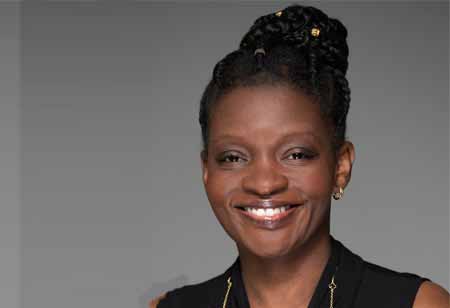

Thank you for Subscribing to Medical Care Review Weekly Brief

How has your journey as an individual been so far?
I have been an attending physician in Northern Virginia at a private practice since 2009, and I joined Children’s National Hospital as a pediatric cardiologist last year. My main focus is treating chest pain, heart murmurs, and palpitations. I am also the co-chair of the women and children’s committee of the Association of Black Cardiologists (ABC). One of the initiatives we have undertaken as a committee is black maternal health, educating on the cardiovascular disease risk factors in pregnant women. What challenges do you usually face, and how do you mitigate them? Black women are twice as likely to die from pregnancy or childbirth-related complications than their white counterparts, mainly due to postpartum cardiomyopathies and blood pressure disorders like preeclampsia and eclampsia. Through our black maternal health initiative, we avoid these complications by ensuring women exercise and eat healthily from their youth. Supervising their health habits from an early age can help them from developing hypertensive disorders during pregnancy. Expectant mothers can also use different apps to monitor their blood pressure and be able to prevent the onset of preeclampsia. They can self-monitor their blood pressure at home and notify their doctors if they notice red flags. “The biggest trend is getting pregnant moms to advocate for their health by keeping track of their blood pressure and alerting their doctors if anything is wrong.” Children born to preeclamptic moms have a higher risk of having cardiovascular disease in the future. So, we closely watch their blood pressure levels and try to avoid severe consequences by keeping track of their health. Another thing we do is encourage children to eat good food and exercise regularly. Since children like games and being on their screens, we could combine the two aspects and create a technology that makes healthy eating and living fun in their daily lives. What technological trends have emerged lately that help you tackle daily challenges? The most significant trend is getting pregnant moms to advocate for their health by keeping track of their blood pressure and alerting their doctors if anything is wrong. We also ensure that all the people involved with the patient are aware of the maternal health issues and ready to intervene as soon as possible in case of an emergency. We are being more innovative and proactive as pediatric cardiologist specialists to screen and protect kids born to preeclamptic moms so they can lead healthy lives and push for moms to regularly monitor their blood pressure. Can you talk about a recent project initiative that you have been a part of where you leveraged the trends? One of the main things that the Association of Black Cardiologists committee did was launch a campaign called “the faces of black maternal health” in February, this year. The committee’s president at the time, Dr Michelle Alpert, included people affected by the black pregnancy crisis, in the campaign. We showed videos, shared experiences, and created an infographic for the community. How do you envision the next couple of years? My hope for the future is to eliminate the disparities in the black maternal community. Since many health issues affect the black community, we should be given more opportunities and education to advocate good health and take proper care of nurturing bodies. A lot of what I hope for the future has to do with social determinants of health and non-medical issues outside the hospital walls. We also need to consider their surroundings before expecting them to eat healthily because there might be many fast-food or expensive restaurants around them, or they might be living in an unsafe neighborhood to walk around outside. Taking these factors into account, we’re also trying to address them as part of our program. We have set up a holistic team involved in the healthcare of black patients so we can make a dent in the disparities and help those who need it. What advice would you give to your colleagues or peers in the telehealth industry? Go beyond technology and make a genuine one-on-one connection with your patients because that patient-doctor connection is essential. As a physician, you should really get to know your patients even if you get 10 to 15 minutes to talk to them, and you may not see them again. By attempting to make that connection, patients would know you care, and might learn interesting titbits.